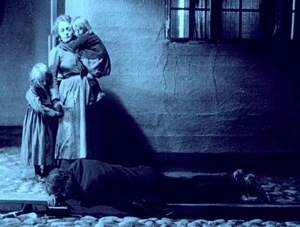 Death can’t catch a break in Hollywood. That’s Death with a capital “D,” the entity in black wielding a scythe.
Death can’t catch a break in Hollywood. That’s Death with a capital “D,” the entity in black wielding a scythe.
Aside from the “Final Destination” series (no screen time), “Meet Joe Black” (ugh) and “Harry Potter” (cameo), Death has been passed over in favor of the flesh-eating zombies, stylish vampires and demented serial killers of contemporary cinema.
Too bad. Death cuts a fine figure in the lands of shadow and fog. Ingmar Bergman knew. He cast the gatherer of souls as the co-star of “The Seventh Seal.” Turns out, Death plays a mean game of chess.
Bergman took no credit for discovering Death. As a child, the Swedish filmmaker fell under the spell of the incredible 1921 silent “The Phantom Carriage,” directed by Victor Sjostrom (“The Wind”).
“I was shaken to the core by the movie,” Bergman recalled.
By his own count, Bergman watched the film more than 100 times. “It is one of the absolute masterpieces in the history of the cinema,” he said. Charlie Chaplin agreed, calling it the best movie ever seen.
The Criterion Collected has released Sjostrom’s “Phantom Carriage” on Blu-ray and DVD. The 90-year-old Swedish movie is tinted, mostly in blues and browns, presented in the original 1.37:1. The film is remarkably well-preserved and restored, as befits the cornerstone of Swedish cinema.
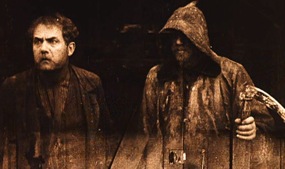 The Criterion discs offer a choice of two soundtracks — one, a straightforward chamber orchestral score and the other an experimental work by a duo called KTL, with electric guitar and electronic effects. You only go around once, so try the second one first.
The Criterion discs offer a choice of two soundtracks — one, a straightforward chamber orchestral score and the other an experimental work by a duo called KTL, with electric guitar and electronic effects. You only go around once, so try the second one first.
The story revolves around a charismatic antihero (played by Sjostrom himself), a fallen family man turned to drink and domestic violence. A Salvation Army nurse fights bravely to save the reprobate, but contracts the consumption (TB) for her efforts. The story begins with the nurse on her deathbed, calling out for the no-gooder, with whom she has fallen in love. Death has other plans.
When the film first was distributed in the U.S. (as “The Stroke of Midnight”), it was re-edited to form a linear narrative. No wonder, since film audiences were presented an adventurous construction of flashbacks and fast-forwards, with shifting stories within stories. Needless to say, it was decades ahead of its time.
Also remarkable for the time were the special effects, used to present ghosts and the “phantom carriage.” Pulled by the ghost of a horse, the carriage is driven by the last person to die on New Year’s Eve. Enslaved as the ghostly embodiment of Death, complete with scythe and black hood, the unfortunate wretch must ride around collecting souls as they breathe their last.
Sjostrom and his cameraman devised a scheme for trick shots in which the film passed through the camera as many as four times. The actors would perform in front of a black screen, which functioned much like a modern green screen. Another curiosity: the film was among the first to be shot mostly at night.
Extras include “the Bergman Connection,” an excellent visual essay about the movie’s effect on Bergman and his use of Death. (Sjostrom later would act in several Bergman films, notably “Wild Strawberries.”)
There are also an interview with Bergman about the 1921 film; a fine booklet; and construction footage of the Swedish studio christened by the production.
The full-length commentary by academic Casper Tybjerg is dry and very scene specific, probably best sampled if the other extras don’t prove sufficient.
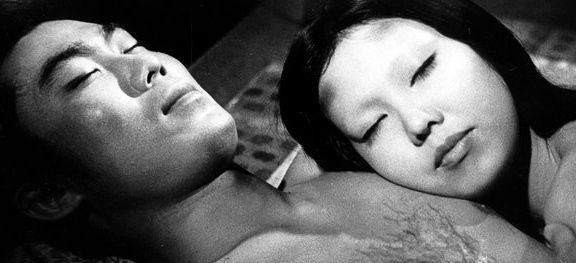
Kaneto Shindo’s “Kuroneko” (aka “Black Cat”) brews together two eternal Japanese film genres: the ghost story and the samurai adventure.
The celebrated Shindo (“The Naked Island”) never shed his agrarian roots, considering samurai a natural enemy of his people. Instead of being cast as heroes, the samurai of “Kuroneko” open the 1968 film by raping and murdering two rural women — the mother and wife of a conscripted soldier.
The women return, resurrected from the netherworld by the family’s black cat. The undead duo set about trapping and killing the samurai who savaged them, one by one.
Meanwhile, their beloved soldier returns, a war hero and now a decorated samurai. He’s assigned to seek out and banish the killer ghosts, never suspecting they’re the shades of his loved ones.
Husband and wife are reunited in several erotically charged scenes, but their time grows short. The spirit must kill her samurai or burn in hell.
The many pleasures of “Kuroneko” include its drum-heavy soundtrack (awesome in the lossless audio), and the naturalist (and creepy) cinematography that sometimes recalls “Night of the Hunter.”
Criterion’s new Blu-ray and DVD of Kaneto Shindo’s “Kuroneko” (link above) include an interview with the director in which he mostly wants to talk about what it’s like being an old man. An excellent talk by critic Tadao Sato puts the film in context with Japanese film, folklore and superstitions.
Check out Glenn Abel on Google+

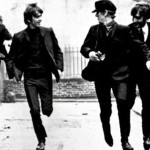
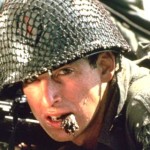
Leave a Reply